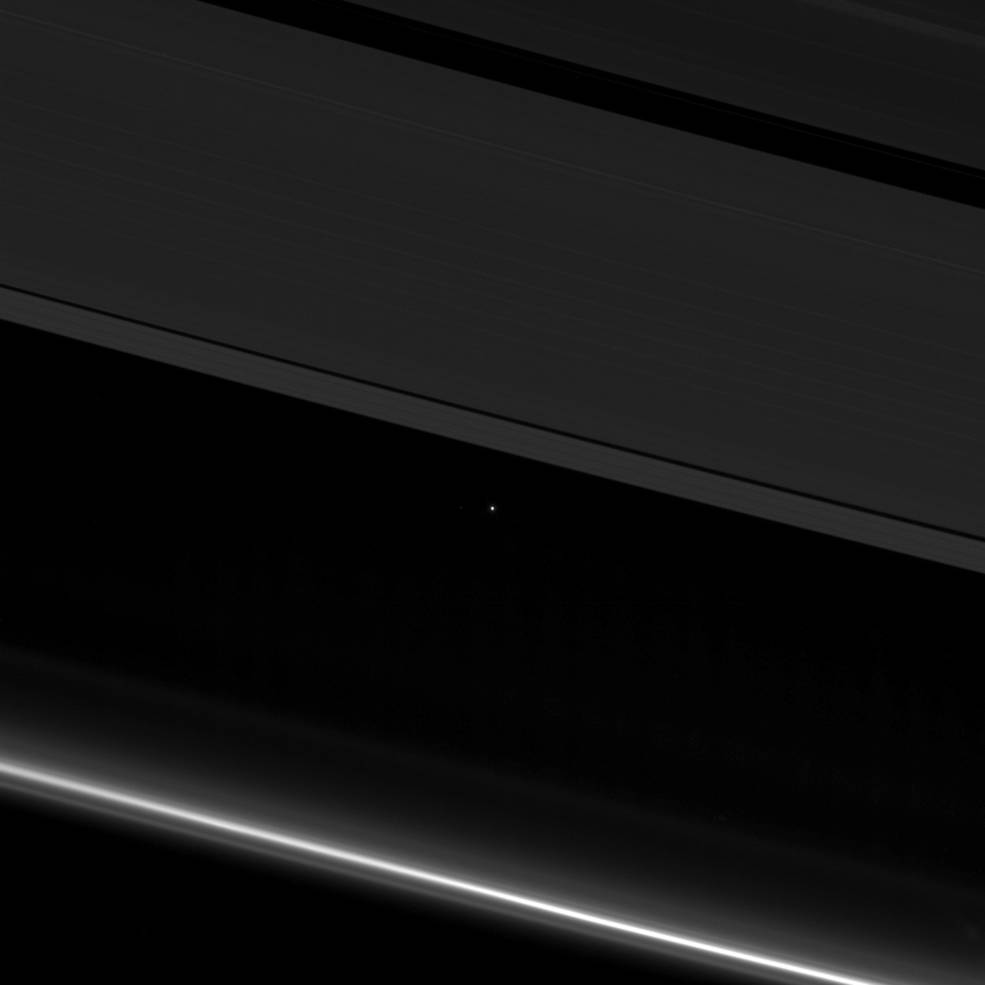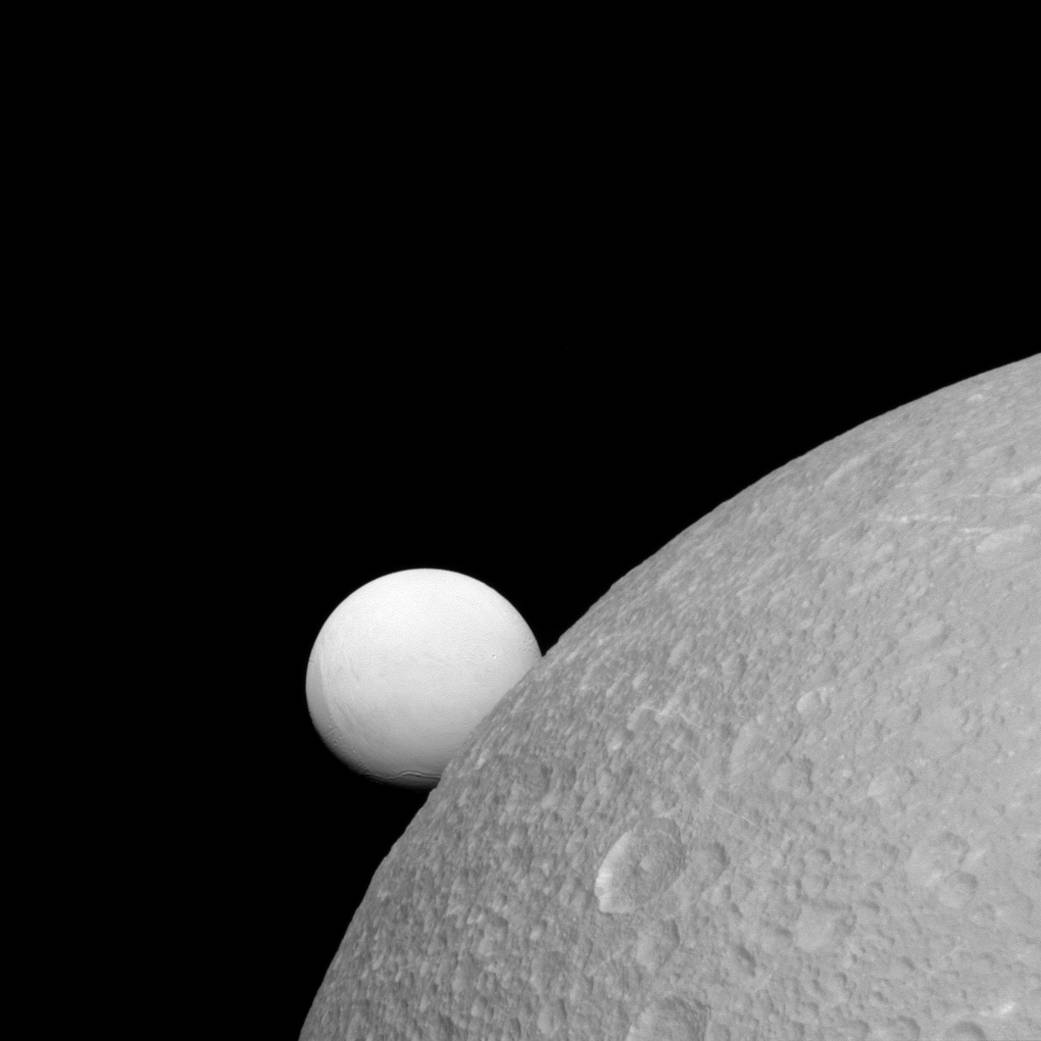
Earth as seen through Saturn’s rings, as photographed by NASA’s Cassini space probe.
See that dot in the middle of the picture? That’s Earth as photographed through the rings of Saturn.
A recent image from NASA’s Cassini spacecraft shows our home planet as a tiny speck of light between the icy rings. To me, it kind of looks like a speck of dust caught in the grooves of a vinyl record. Whatever your individual interpretation, it’s a reminder that we’re one tiny bright spot floating in a sea of stars.
Makes you feel kind of insignificant, doesn’t it?
Cassini shot the image on April 12, when it was 870 million miles from Earth. The robotic spacecraft — a joint mission between NASA, the European Space Agency and the Italian space agency, Agenzia Spaziale Italiana — has been orbiting the ringed planet and studying its system in detail.
That mission, however, will end later this year.
After a close pass by Saturn’s moon Titan, Cassini is beginning a final 22 orbits around the planet, which will terminate with a dramatic final descent. Dubbed the Grand Finale by NASA, the probe will take a “science-rich plunge” into Saturn’s atmosphere on Sept. 15.


